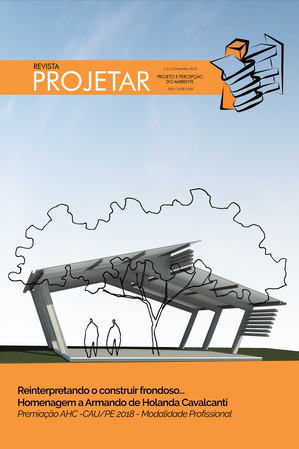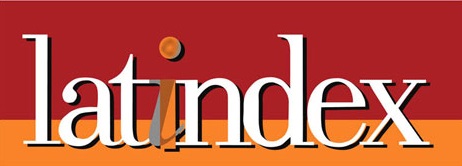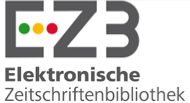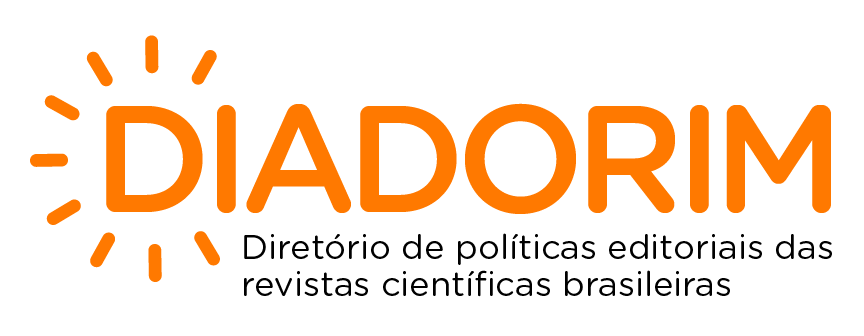FLUXOS DE TRABALHO COM FERRAMENTAS BIM: APLICAÇÃO DE QUESTIONÁRIO ONLINE
DOI:
https://doi.org/10.21680/2448-296X.2018v3n3ID16538Palavras-chave:
Concepção, Processos, PesquisaResumo
O advento de softwares BIM como suporte ao projeto de arquitetura trouxe não só uma nova ferramenta de trabalho para o arquiteto, mas também um novo modo de projetar. Além das vantagens práticas trazidas pelo processo BIM, o uso desse tipo de ferramenta no projeto desafia procedimentos tradicionais no modo de ver e conceber, o que traz rebatimentos na prática projetual. Esse artigo visa identificar e analisar fluxos de trabalho predominantes em ferramentas BIM a partir da aplicação de questionários online com arquitetos brasileiros. Os dados coletados são analisados com o uso de filtros, que ajudam a compreender melhor os resultados, enriquecendo a análise. Com base nas informações obtidas, o trabalho faz uma síntese dos principais fenômenos que podem apresentar algumas consequências potencialmente negativas no processo de projeto de arquitetura.
Downloads
Referências
AMBROSE, M. A. Plan is dead: to BIM or not to BIM, that is the question. ARAB SOCIETY FOR COMPUTER AIDED DESIGN(ASCAAD 2006). Proceedings of ASCAAD 2006. Sharjaj,Emirados Árabes. ASCAAD,2006, pp. 182-189
AMERICAN INSTITUTE OF ARCHITECTS. E202: BIM Protocol Exhibit.Washington: AIA. 2008.
BECERIK-GERBE, B.; RICE, S. The Perceived Value of Building Information Modeling in the U.S. Building Industry. Journal of Information Technology in Construction, vol.15, 2010, pp. 185-201.
BRYDE, D.; BROQUETAS, M.; VOLM, J. M. The project benefits of Building Information Modelling (BIM). International Journal of Project Management, v. 31, n. 7, p. 971-980, 2013.
DONN, M. Simulation of Imagined Realities: environmental design decision support tools in architecture. 2004. (PhD). Victoria University, Wellington, NZ.
FERNANDES, R. P. L. Advantages and Disadvantages of BIM Platforms on Construction Site. Disssertação de Mestrado. Departamento de Engenharia Civil, Universidade do Porto, Porto, Portugal, 2013.
GERO, J. S.; MAHER, M. L. Mutation and analogy to support creativity in computer-aided design. In: SCHMITT, G. N. (Ed.). CAAD futures 91'. Zurich: ETH, 1991, pp. 01-09.
MANDHAR, M.; MANDHAR, M. BIMing the architectural curricula: Integrating Building Information Modelling (BIM) in Architectural Education.International Journal of Architecture, v. 1, n. 1, p. 1-20, 2013. RAMOS, F. G. V. O desenho e a arquitetura em Leon Battista Alberti e Giorgio Vasari. VII Encontro de história da arte. Anais do VII Encontro de História da Arte.Campinas, SP: UNICAMP,2011, pp. 535-544.
SCHÖN, D. The design studio: an exploration of its tradition and potentials.London: RIBA Publications Limited, 1985.
SCHÖN, D. A. The reflective practitioner: How professionals think in action.London: Temple Smith, 1983.
TAKIM, R.; HARRIS, M.; NAWAWI, A. H. Building Information Modeling (BIM): A new paradigm for quality of life within Architectural, Engineering and Construction (AEC) industry.Procedia -Social and Behavioral Sciences, v. 101, n. 8, p. 23-32, 2013.
TALEBI, S.ExploringadvantagesandchallengesofadaptationandimplementationofBIMinprojectlife cycle.2nd BIM International Conference on Challenges to Overcome. Proceedings of 2ndBIM International Conference.Lisboa, Portugal 2014.
YAN, H.; DAMIAN, P. Benefits and Barriers of Building Information Modelling.12th International Conference on Computing in Civil and Building Engineering (ICCCBE XII).Proceedings of ICCCBE XII.Pequim, China: Tingshua University Press,2008, pp. 294-300.
Downloads
Publicado
Como Citar
Edição
Seção
Licença
Autores que publicam nesta revista concordam com os seguintes termos:
- Autores mantém os direitos autorais e concedem à revista o direito de primeira publicação, sendo o trabalho licenciado sob a licença Creative Commons Atribuição-NãoComercial-CompartilhaIgual segundo a qual é permitido o compartilhamento do trabalho com reconhecimento da autoria e publicação inicial nesta revista.
- Autores têm autorização para assumir, separadamente, contratos adicionais para distribuição não-exclusiva da versão do trabalho publicada nesta revista (ex.: publicar em repositório institucional ou como capítulo de livro), desde que com reconhecimento de autoria e publicação inicial nesta revista.
- Autores têm permissão e são estimulados a publicar e distribuir seu trabalho online (ex.: em repositórios institucionais ou na sua página pessoal) desde que concluído o processo editorial, já que isso pode gerar alterações produtivas, bem como aumentar o impacto e a citação do trabalho publicado (Veja O Efeito do Acesso Livre).
- Não recomenda-se publicação e distribuição do artigo antes de sua publicação, pois isso poderá interferir na sua avaliação cega pelos pares.








